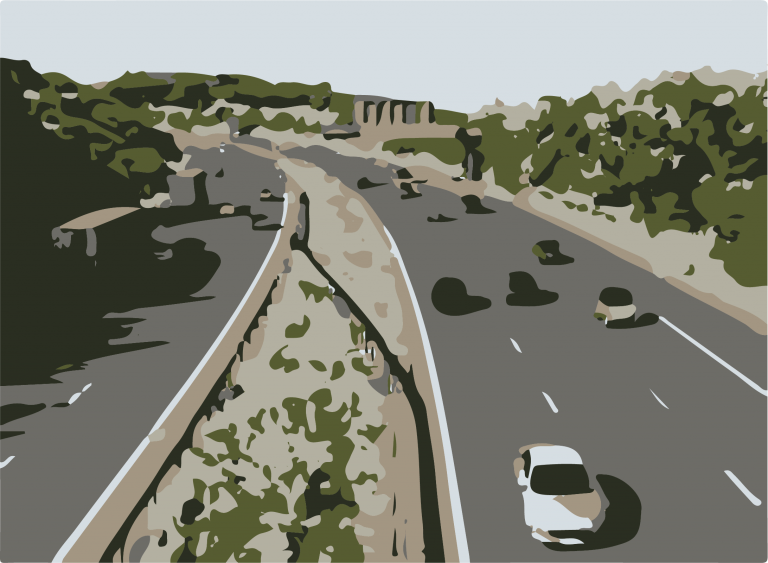This is a fantastic blog, Luke! I agree that there is an imperative need for more developed and efficient public transports to come about if we are to move forward with sustainable transportation. Having recently written a blog entry about smart cities, there seems to be so many new opportunities for public transports to improve, making this quite exciting! The RATP group (2017) for instance, which was initially launched for the Parisian public transport system, and which is now present in fourteen countries across the globe, is partnered with smart cities to operate and preserve effective and safe transport networks. It has for instance decided to incorporate automated driverless metros, which are regarded as be one of the most viable methods in minimising network congestion. On top of that, it is safer, more reliable and less energy intensive. It is an impressive organisation which I sense will help to, slowly but surely, help bring public transportation at the forefront of creating more sustainable and connected cities.
I discovered however that, particularly since the start of the pandemic, people have grown more aware of health, adopting behaviours like social distancing, and sanitising their hands. As a result, many individuals, particularly older people who often depend on public transport, now avoid using it. It has become a huge issue as, as surveyed by the European Investment Bank (2021) “75% of Americans, 71% of Chinese and 67% of Europeans say they are less likely to use public transport” due to COVID-19 health-related concerns. As a result, “many transit agencies experienced a sharp decrease in ridership (and resulting loss in revenue) alongside a costly re-organisation of services in response to public health recommendations” (Ravensbergen & Newbold, 2020). With some people not being able to afford to stay at home, others lacking the financial means to use more private and expensive modes of transports, and finally some being unable to use means of active travel to commute, public transport systems remain essential.
It seems evident that the best solution to solve sustainable transportation, is to move forward with public transport by enhancing and developing it further, using smart technologies for instance. But will this emerging ‘fear’ of public transportation cause a setback to the development of such public transport? Although, it is possible that cities will revert to what they once were pre-pandemic, the obstacles COVID-19 poses on our cities may slow down the development of sustainable and efficient public transports network in our cities worldwide.
– European Investment Bank (2021) 67% of Europeans avoiding public transport because they are worried about their health. Available at: https://www.eib.org/en/infographics/67-percent-eu-avoiding-public-transport-health-concerns (accessed 09 January 2022).
– RATP Group (2017) Activity and sustainable development report 2017. Available at: https://www.ratp.fr/sites/default/files/2018-10/1_ratp_radd_ra2017_corporate_gb_mel.pdf (accessed 09 January 2022).
– Ravensbergen, L. & Newbold, B.s (2020) “I wouldn’t want to get on the bus”: Older Adult Public Transit Use and Challenges during the COVID-19 Pandemic. Available at: https://findingspress.org/article/18202-i-wouldn-t-want-to-get-on-the-bus-older-adult-public-transit-use-and-challenges-during-the-covid-19-pandemic (accessed 09 January 2022).










This is a fantastic blog, Luke! I agree that there is an imperative need for more developed and efficient public transports to come about if we are to move forward with sustainable transportation. Having recently written a blog entry about smart cities, there seems to be so many new opportunities for public transports to improve, making this quite exciting! The RATP group (2017) for instance, which was initially launched for the Parisian public transport system, and which is now present in fourteen countries across the globe, is partnered with smart cities to operate and preserve effective and safe transport networks. It has for instance decided to incorporate automated driverless metros, which are regarded as be one of the most viable methods in minimising network congestion. On top of that, it is safer, more reliable and less energy intensive. It is an impressive organisation which I sense will help to, slowly but surely, help bring public transportation at the forefront of creating more sustainable and connected cities.
I discovered however that, particularly since the start of the pandemic, people have grown more aware of health, adopting behaviours like social distancing, and sanitising their hands. As a result, many individuals, particularly older people who often depend on public transport, now avoid using it. It has become a huge issue as, as surveyed by the European Investment Bank (2021) “75% of Americans, 71% of Chinese and 67% of Europeans say they are less likely to use public transport” due to COVID-19 health-related concerns. As a result, “many transit agencies experienced a sharp decrease in ridership (and resulting loss in revenue) alongside a costly re-organisation of services in response to public health recommendations” (Ravensbergen & Newbold, 2020). With some people not being able to afford to stay at home, others lacking the financial means to use more private and expensive modes of transports, and finally some being unable to use means of active travel to commute, public transport systems remain essential.
It seems evident that the best solution to solve sustainable transportation, is to move forward with public transport by enhancing and developing it further, using smart technologies for instance. But will this emerging ‘fear’ of public transportation cause a setback to the development of such public transport? Although, it is possible that cities will revert to what they once were pre-pandemic, the obstacles COVID-19 poses on our cities may slow down the development of sustainable and efficient public transports network in our cities worldwide.
– European Investment Bank (2021) 67% of Europeans avoiding public transport because they are worried about their health. Available at: https://www.eib.org/en/infographics/67-percent-eu-avoiding-public-transport-health-concerns (accessed 09 January 2022).
– RATP Group (2017) Activity and sustainable development report 2017. Available at: https://www.ratp.fr/sites/default/files/2018-10/1_ratp_radd_ra2017_corporate_gb_mel.pdf (accessed 09 January 2022).
– Ravensbergen, L. & Newbold, B.s (2020) “I wouldn’t want to get on the bus”: Older Adult Public Transit Use and Challenges during the COVID-19 Pandemic. Available at: https://findingspress.org/article/18202-i-wouldn-t-want-to-get-on-the-bus-older-adult-public-transit-use-and-challenges-during-the-covid-19-pandemic (accessed 09 January 2022).